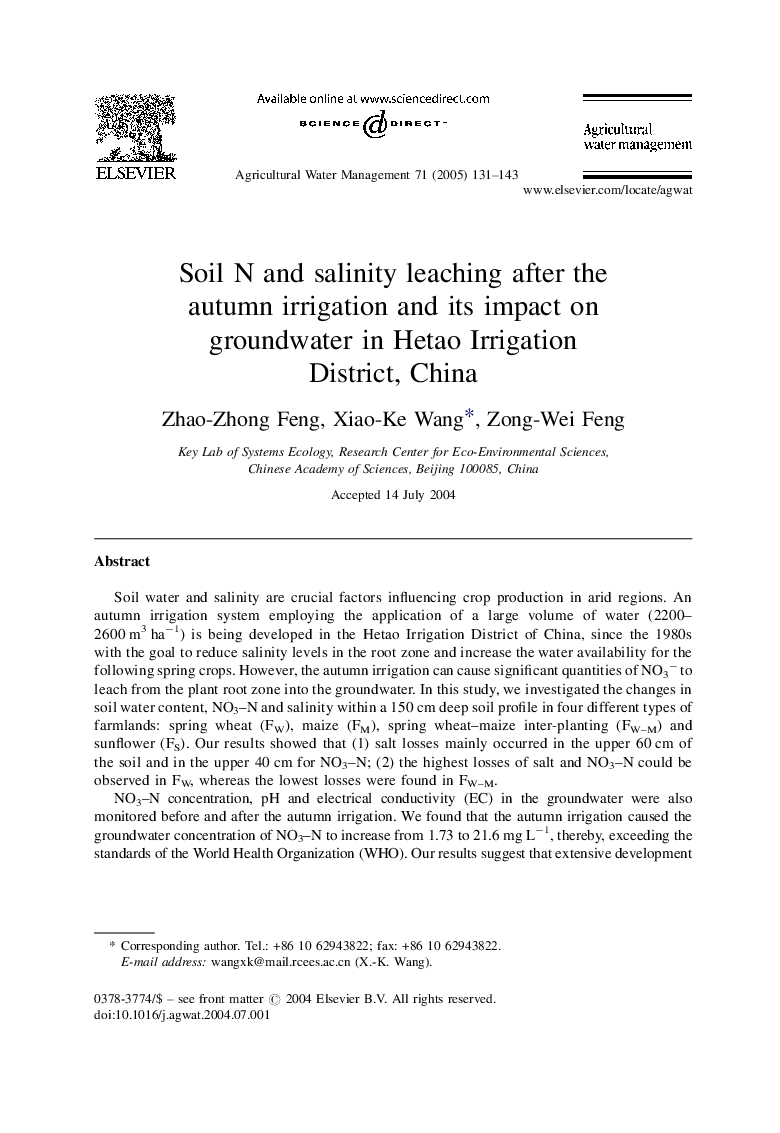| Article ID | Journal | Published Year | Pages | File Type |
|---|---|---|---|---|
| 9467444 | Agricultural Water Management | 2005 | 13 Pages |
Abstract
NO3-N concentration, pH and electrical conductivity (EC) in the groundwater were also monitored before and after the autumn irrigation. We found that the autumn irrigation caused the groundwater concentration of NO3-N to increase from 1.73 to 21.6 mg Lâ1, thereby, exceeding the standards of the World Health Organization (WHO). Our results suggest that extensive development of inter-planting tillage might be a viable measure to reduce groundwater pollution, and that the application of optimized minimum amounts of water and nitrogen to meet realistic yield goals, as well as the timely application of N fertilizers and the use of slow release fertilizers can be viable measures to minimize nitrate leaching.
Related Topics
Life Sciences
Agricultural and Biological Sciences
Agronomy and Crop Science
Authors
Zhao-Zhong Feng, Xiao-Ke Wang, Zong-Wei Feng,
